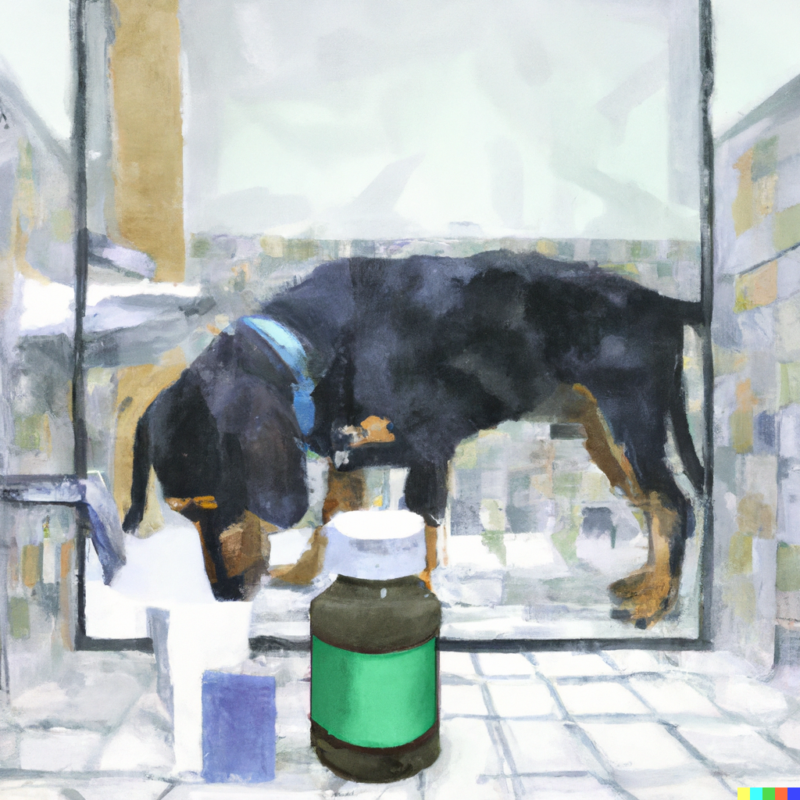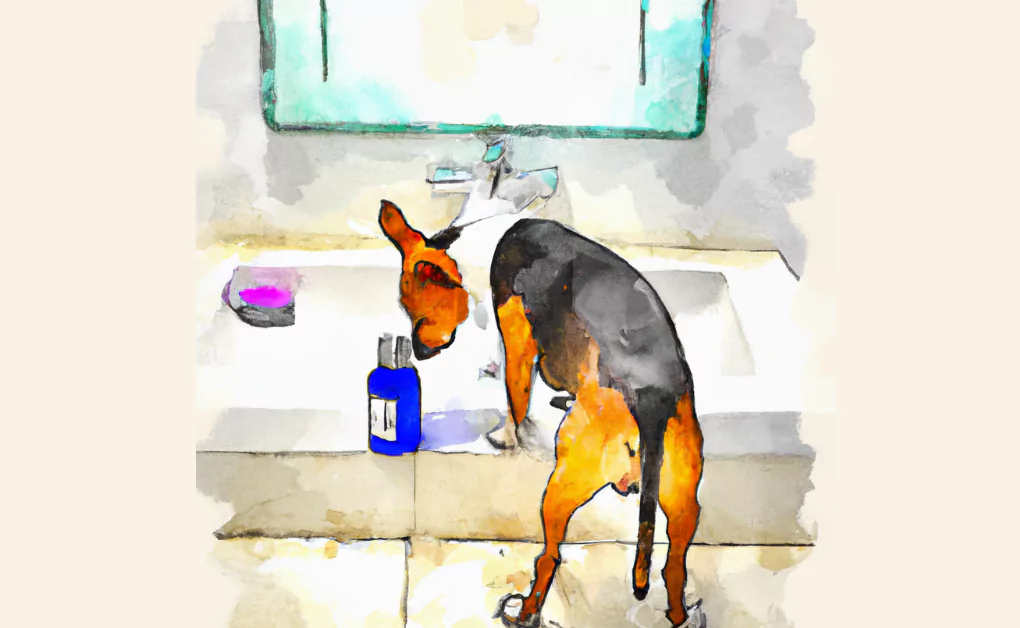Can You Share Your Xanax With Your Dog?
Introduction
It was a stormy night, and Jane was feeling anxious about the impending thunderstorm. She reached for her prescribed Xanax to help calm her nerves, but her loyal canine companion, Rufus, seemed just as on edge. As she held the bottle in her hand, she began to wonder if she could share her Xanax with Rufus to help him through his own anxiety.
Anxiety medications are often prescribed for pets who suffer from separation anxiety and fearfulness, among other conditions. However, you can’t just give out any medication to your pets without consulting a vet, as it may cause harm to your pet without you realizing it. According to the center, almost a quarter of the calls to the ASPCA Animal Poison Control Center is about animals taking human medications and suffering adverse effects.
Ibuprofen, tramadol, alprazolam, Adderall, zolpidem (Ambien), clonazepam, acetaminophen, naproxen, duloxetine (Cymbalta), and venlafaxine (Effexor) are the top 10 most commonly abused medications in dogs. In addition, several dogs anxiety medications are available for animals, including anti-depressants, tranquilizing drugs, and others. Your veterinarian will likely recommend an appropriate dosage based on your pet’s weight, age, overall health, and other factors.
How Does Xanax Work?
Xanax, also known by its generic name alprazolam, is a medication in the benzodiazepine category, often employed to manage conditions linked with excessive brain activity. For instance, it’s utilized to treat anxiety disorders and panic attacks. Occasionally, it’s used off-label for sleep disorders like insomnia.
The primary function of Xanax involves amplifying the activity of gamma-aminobutyric acid (GABA), a neurotransmitter in the brain that curtails the actions of the central nervous system. This amplification instigates a soothing effect, diminishing anxiety and fear, promoting relaxation, and inducing sleepiness, which can be especially useful for treating dog anxiety.
Xanax achieves its effect by binding to GABA receptors in the brain, thus intensifying the impacts of GABA. This action decelerates brain activity, reducing feelings of anxiety and other stress-related psychological reactions, making it an effective anti-anxiety medication. This can provide significant relief for dogs suffering from situational anxiety, much like the effect gabapentin can have.
However, it’s worth acknowledging that, as Xanax modifies brain chemistry, it can cause dogs to become dependent, showcasing withdrawal symptoms when the medication is stopped. Therefore, Xanax pills should only be administered under the careful guidance of a pet owner and a healthcare provider, mainly when used for pain relief.
Can You Give a Human Xanax To Your Dog?
Although Xanax, or alprazolam, is occasionally utilized off-label in veterinary medicine to alleviate anxiety and phobias in dogs, its administration should always be under a veterinarian’s direct guidance and supervision. This is critical because Xanax is a controlled substance, and inappropriate use can lead to toxicity. In addition, research indicates that over 67% of dogs experience at least one form of noise aversion, a common anxiety issue that could benefit from such treatment.
However, it’s crucial to understand that animal dosages are different from those for humans. Providing a dog with a dose designed for a human could result in a potentially lethal overdose. Accidental ingestion of Xanax by a dog or cat should always prompt an immediate veterinary visit.

Xanax also has the potential to interact adversely with other pet medications your dog may be taking, and it can be dangerous for dogs with certain health conditions. It’s important to note that Xanax can lead to serious side effects, and long-term use can cause physical dependence and withdrawal symptoms, impacting a dog’s mental health.
In summary, while Xanax can potentially assist an anxious dog with specific conditions, it should only be administered under the direct supervision of a veterinarian. Never give your Xanax prescription to your dog; always consult a vet about how much Xanax to share if it is deemed necessary for your dog’s health. In addition, your dog should have a veterinary consultation before receiving any prescribed or over-the-counter medication.
What Are The Side Effects of Xanax on Dogs?
Like in humans, Xanax, also known as alprazolam, can lead to side effects in dogs. Some side effects are mild and may subside with time, while others could be more severe. If your dog takes Xanax under veterinary guidance, monitoring them for any health or behavioral changes is crucial.
Common side effects of Xanax in dogs include sedation and drowsiness, which could affect your dog’s alertness and make them sleepier than usual. Ataxia, or lack of coordination, is another side effect that might make your dog appear unsteady or have difficulty walking. Xanax may also play with your dog’s appetite, leading to an increase that, if not managed, could cause weight gain.
Gastrointestinal issues, including vomiting, diarrhea, or constipation, are possible adverse reactions some dogs might experience while on Xanax. In addition, the drug can cause paradoxical behavioral changes, such as increased anxiety, agitation, or even aggression in some dogs. It’s also important to know if your dog has health problems that could exacerbate these effects, such as liver or kidney disease.
In rare cases, Xanax can induce respiratory depression, which involves slowed or shallow breathing and can be life-threatening. In the worst-case scenario, extended use of Xanax could potentially lead to liver failure.
If you notice any of these side effects or other unusual symptoms in your dog, including Xanax-induced anxiety disorders and panic, immediately contact your veterinarian. They might need to adjust the dosage, consider an alternative medication, or treat any health problems contributing to the side effects. Alprazolam may cause side effects that interact with other medicines, so always disclose any other drugs or supplements your pet takes.
Remember, never attempt to help your pet with anxiety by sharing your prescription without consulting a vet. Pets ingesting human medication can face significant risks, including becoming dependent. Always work with your vet to find the best way to support your pet’s health.
Proper Xanax Dosage for Cats and Dogs
When administering Xanax (alprazolam) to your pet, it’s crucial to remember that a licensed veterinarian must determine the dosage. The exact dose of Xanax will vary based on several factors, including the animal’s size, weight, age, overall health condition, and the specific issue being treated.
For dogs, Xanax dosage typically ranges from 0.01 to 0.1 mg per kg of body weight, given orally every 12 hours. However, the lower end of the dosage range is more commonly used to minimize potential side effects.
In cats, Xanax is used less frequently due to its unique metabolism, which can make them more susceptible to side effects. If used, it is typically at a lower dosage range than in dogs and always under close veterinary supervision.
It is essential to remember that these are general guidelines and that individual dosages may vary. Therefore, a veterinarian should always determine the correct dosage for your pet.
Overdosing can lead to severe and potentially life-threatening symptoms, including extreme sedation, difficulty breathing or even collapse. If you suspect your pet has ingested too much Xanax, seek veterinary attention immediately.
Never administer Xanax prescribed for a human to your pet, as the dosage for humans is significantly different than for pets. Always consult with a veterinarian before giving your pet any new medication.
Alternative Treatment Options for Dogs
If Xanax (alprazolam) is not a suitable option for your dog, or if you’re interested in exploring alternative treatments, several possibilities exist. These include:

Different anti-anxiety medications
Other anti-anxiety drugs might be more appropriate for your dog. Fluoxetine (Prozac), Clomipramine (Clomicalm), Sertraline (Zoloft), and Amitriptyline (Elavil) are a few options. However, always consult your veterinarian before starting any new treatment with alprazolam or other medication. Each pill can have serious side effects, and dosages of alprazolam and other medications can vary significantly between humans and dogs. Moreover, these drugs may interact with other medications your dog is taking.
Pheromone Therapy
Products such as Adaptil replicate the soothing pheromones produced by mother dogs to comfort their puppies. These are available in different forms like diffusers, collars, or sprays and can help create a peaceful environment for your dog, thereby reducing anxiety.
Herbal Supplements
Herbal remedies like valerian root, chamomile, and passionflower have been known to alleviate anxiety. They usually come as chewable tablets or drops that can be added to your dog’s food.
Natural substances
L-Theanine, an amino acid found in tea leaves, and melatonin, a hormone that controls sleep cycles, can both have calming effects.
CBD Oil
Cannabidiol (CBD) is a compound present in cannabis and hemp. Unlike THC, it doesn’t have psychoactive properties. Instead, it’s been used for its potential soothing and anti-inflammatory effects. Remember to choose products specifically designed for pets and follow the manufacturer’s dosing guidelines, including Xanax dosage for dogs.
Dietary Changes
Some diets are specifically designed to manage stress and anxiety in dogs. These foods may contain particular nutrients that support brain function and promote a sense of calm.
Aromatherapy
Essential oils like lavender can have a calming effect on dogs. However, caution is necessary since not all essential oils are safe for dogs, and they should never be applied directly to the skin or ingested.
Behavior Modification
This non-pharmacological approach to anxiety management can also be highly effective.
While many human drugs can help dogs, it’s crucial to remember that even though many human drugs can assist, the effects of some drugs, such as opioids or drugs for kidney disease or glaucoma, can be worsened by the drug and may cause hyperactivity or even aggression.
Always consult your veterinarian before introducing any new treatment or supplement to manage your dog’s anxiety. Considering your dog’s unique needs and circumstances, they can guide the best course of action.
Frequently Asked Questions
Disclaimer: The information provided on this veterinary website is intended for general educational purposes only and should not be considered as a substitute for professional veterinary advice, diagnosis, or treatment. Always consult a licensed veterinarian for any concerns or questions regarding the health and well-being of your pet. This website does not claim to cover every possible situation or provide exhaustive knowledge on the subjects presented. The owners and contributors of this website are not responsible for any harm or loss that may result from the use or misuse of the information provided herein.







